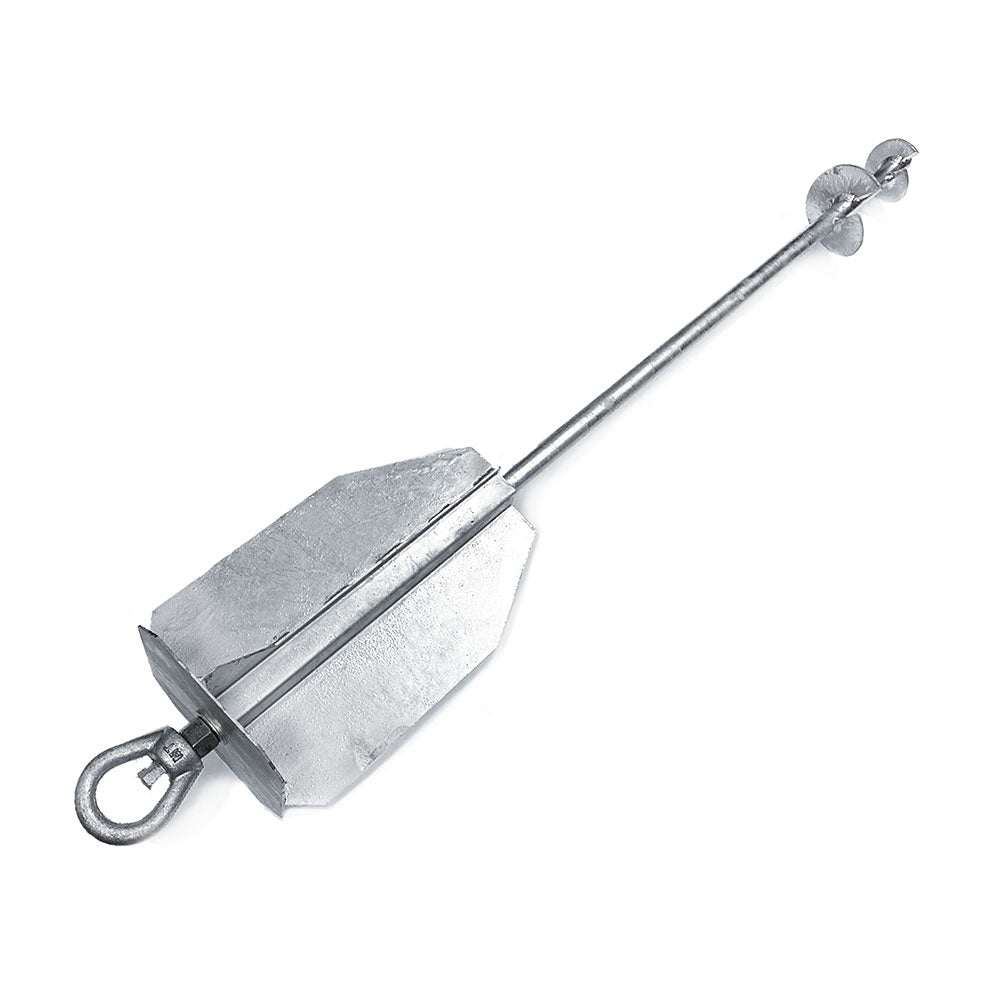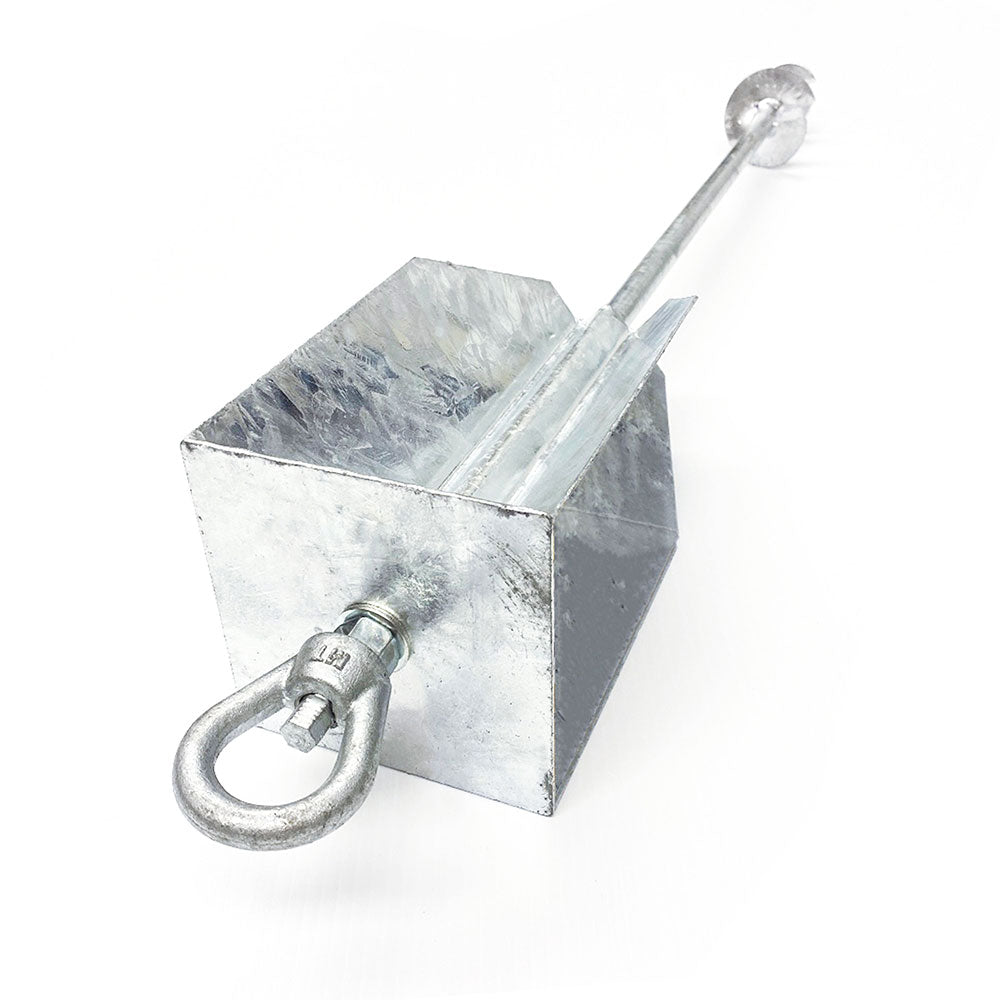Advantages of a High-Quality Ground Anchor for Better Security
Advantages of a High-Quality Ground Anchor for Better Security
Blog Article
Understand Why Ground Support Is Very Important for Safety And Security and Resilience
Ground supports are a vital part in building and construction, offering essential assistance and security for various frameworks. Comprehending the different types and applications of ground supports can brighten their essential role in making certain safety and toughness.
Duty of Ground Anchors in Building And Construction
Ground supports play a critical function in building by supplying crucial assistance and security to structures. These devices are made to transfer lots from a structure to the ground, ensuring that buildings and other infrastructures continue to be safe under numerous conditions. Ground anchors are particularly important in scenarios where soil conditions are unpredictable or where there is a threat of lateral movement, such as on slopes or near bodies of water.
The setup of ground supports entails drilling into the earth to reach steady dirt or bedrock, where the anchors can be firmly anchored. This process not just improves the structural stability of a project yet likewise alleviates the risks connected with soil disintegration and changing. In addition, ground supports can be employed in short-term frameworks, such as building sites, where they give essential stabilization throughout the building process.
Ground supports likewise add to the long life and resilience of frameworks by lowering the probability of settlement and failing. Ground Anchor. By properly dispersing and taking care of lots, these vital components are crucial in keeping safety and security requirements and making certain the integrity of various building jobs. Generally, the significance of ground anchors in construction can not be overemphasized, as they are essential to effective design methods
Kinds Of Ground Supports


While numerous types of ground anchors exist, each offers particular applications and problems within construction tasks. The most typical types include mechanical supports, grouted anchors, and driven supports.
Mechanical supports, such as development supports, use a mechanical action to protect the anchor within the substratum - Ground Anchor. These are usually employed in light-weight applications, like safeguarding fixtures to stonework or concrete
Grouted supports, on the other hand, involve drilling a hole, positioning a steel pole or cable, and afterwards loading the annular area with grout. This technique appropriates for high-load scenarios, using boosted stability and resistance to vibrant pressures usually located in hefty building.
Driven anchors are typically set up by driving a steel pole or pipeline right into the ground, making them ideal for temporary applications such as securing scaffolding or formwork. They fast to install and can be gotten rid of quickly when no more required.
Other specific anchoring systems include helical supports, which are screw-like gadgets used in different soil conditions, and deadman supports, which depend on the weight of a hidden challenge provide security. Each sort of ground anchor is designed to meet particular design demands, making certain security and architectural stability.
Advantages of Utilizing Ground Anchors
The benefits of utilizing ground supports in building jobs are significant, boosting both safety and architectural efficiency. Ground supports provide essential resistance versus side i was reading this pressures, such as dirt activity, wind tons, and seismic task. This resistance helps maintain the security of structures, preventing prospective failings that might cause costly repairs or dangerous situations.
Additionally, ground supports facilitate the reliable transfer of loads from frameworks to the bordering dirt, ensuring a balanced distribution of weight. This tons transfer lowers the threat of clearing up or shifting, which can endanger the stability of a building in time. By using ground anchors, designers can also develop more effective layouts, as they allow for slimmer architectural aspects while maintaining safety and security standards.
Additionally, ground supports are versatile and flexible to different soil problems and project needs. Their setup can usually be finished rapidly and with marginal disruption to the surrounding setting, making them a reliable option for many building applications. Eventually, making use of ground anchors boosts not just the sturdiness of structures but also adds to a safer working atmosphere for construction workers and future residents.
Typical Applications and Utilizes
Countless building and construction tasks utilize ground anchors for their performance in enhancing stability and safety and security. These flexible parts are generally utilized in numerous applications throughout the building and construction and civil engineering markets. One prevalent application is in keeping wall surfaces, where ground supports give the necessary assistance to stop dirt motion and preserve architectural stability.
Furthermore, ground supports are important in securing momentary structures, such as scaffolding and shoring systems, ensuring they continue to be steady during construction activities. In the realm of structure support, they are utilized to strengthen existing structures, especially in areas susceptible to ground settlement or moving soil problems.
Ground anchors also discover considerable use in incline stablizing projects, where they aid alleviate landslide dangers by securing the dirt to secure rock formations. Another substantial my site application is in the installation of wind turbines, where they safeguard the base against lateral forces created by wind, guaranteeing operational safety and durability.
Moreover, ground supports are used in tunneling projects to maintain the surrounding ground during excavation. Their varied applications highlight the crucial function ground anchors play in keeping safety and security and longevity in numerous construction scenarios.
Setup Best Practices
Effective application of ground supports in numerous building projects pivots learn the facts here now on efficient installment methods. Appropriate installation is essential to guarantee the anchors fulfill their intended purpose and preserve architectural integrity gradually. Key ideal practices consist of detailed site analysis, which involves examining soil problems, lots needs, and ecological aspects that may influence support efficiency.
Before installment, it is important to pick the ideal type of ground support based upon the specific application and dirt qualities. Utilizing premium materials and adhering to manufacturer specs will boost the support's longevity and performance. During installation, ensure that the anchor is placed at the appropriate angle and depth, as these variables considerably influence load-bearing capability.
Additionally, using appropriate tools and strategies is vital, consisting of exploration or driving approaches tailored to the website conditions. After installation, carrying out load testing can validate the anchor's efficiency and determine any type of possible concerns early. Normal evaluations are likewise recommended to monitor the condition of the supports and bordering dirt. By following these installation best techniques, contractors and engineers can enhance the safety and security and long life of structures reliant on ground anchors.

Final Thought
In recap, ground anchors are crucial components in building and construction, substantially improving security and sturdiness. The varied kinds and advantages of ground supports, paired with their wide-ranging applications, highlight their significance in both short-term and long-term structures.
The setup of ground anchors involves drilling into the planet to get to secure dirt or bedrock, where the supports can be firmly anchored.The advantages of utilizing ground anchors in building and construction tasks are substantial, improving both security and structural efficiency.Various building tasks utilize ground supports for their efficiency in enhancing stability and safety.Effective application of ground supports in different building jobs hinges on reliable setup practices.In recap, ground anchors are crucial parts in building and construction, considerably enhancing safety and security and durability.
Report this page